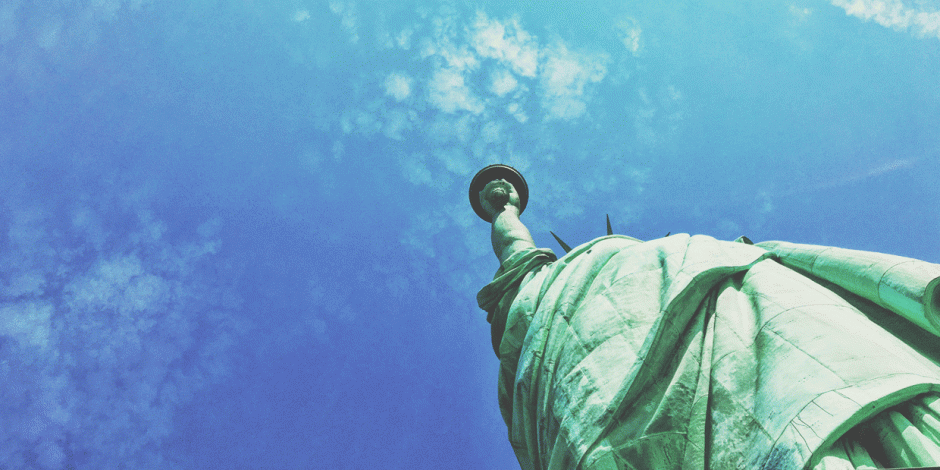“Give me your tired, your poor, your huddledhier: geknechtethuddled masses yearnsich sehnenyearning to breathe free.” These words on the Statue of Liberty, erected in 1883, reflect a time when our country welcomed immigrants who would help build the new nation.
The modern history of immigration dates to the 17th century, when Europeans began coming to the U.S., primarily to escape religious and political persecutionVerfolgungpersecution. During the 19th century, the immigrant population exploded. They settled in the cities, where the Industrial Revolution was creating a huge demand for workers, or they farmed the country’s huge plainFlachland, Ebeneplains. There were also dark sides: Many lived in crowded buildings in the cities and were treated as second-class citizens. Native Americans were pushed off their land. Africans were brought here as involuntary immigrants.
Until the late 19th century, there was little government regulation of immigration. In 1891, Congress passed a law bar sb.jmdn. ausschließenbarring certain types of criminals as well as the sick and diseased. From 1892 to 1954, some 12 million immigrants were screen sb.jmdn. überprüfenscreened at Ellis Island; only about two percent were rejected. A 1917 law added a literacyLese- und Schreibfähigkeitliteracy requirement and barred Asians and other non-white people from receiving visas. In 1924, nationality quotas were established, further restricting the number of non-whites entering the country. Under this law, each nationality was given a specific number of visas, based on their population in the U.S. as recorded in the 1890 census. Since immigrants from Great Britain, Ireland and Germany made up 70 percent of the population at that time, they were assured the greatest number of visas.
The US economy relies on immigrants from Latin America to work in agriculture and the service industries, but many are here illegally.
After World War II, the U.S. established a system of political asylum, mainly to provide a safe haven for those suffering political persecution in Eastern Europe and, later, in Cuba. During the Cold War, the U.S. admitted more than three million refugees.
In 1965, with the civil rights movementAmerikanische Bürgerrechtsbewegungcivil rights movement growing, Congress ended the quota system and made visa allocationZuteilung, Zuweisungallocations fairer. They established seven visa categories, prioritizing family reunificationZusammenführungreunification and skills that were needed in the labor market. The number of non-European immigrants, particularly those from war-tornvom Krieg erschüttertwar-torn parts of Asia, increased sharply.
Since that time, the number of immigrants from Latin America has exploded, presenting the conundrumProblem, schwierige Frageconundrum we face today. Our economy relies on them to work in agriculture and the service industries, but many are here illegally. They live in fear of being deported, and businesses that hire them risk huge fineGeldstrafefines. The need for reform is urgent. Whether it comes, though, will depend on which party wins the presidency and the majority in Congress.
Neugierig auf mehr?
Dann nutzen Sie die Möglichkeit und stellen Sie sich Ihr optimales Abo ganz nach Ihren Wünschen zusammen.



